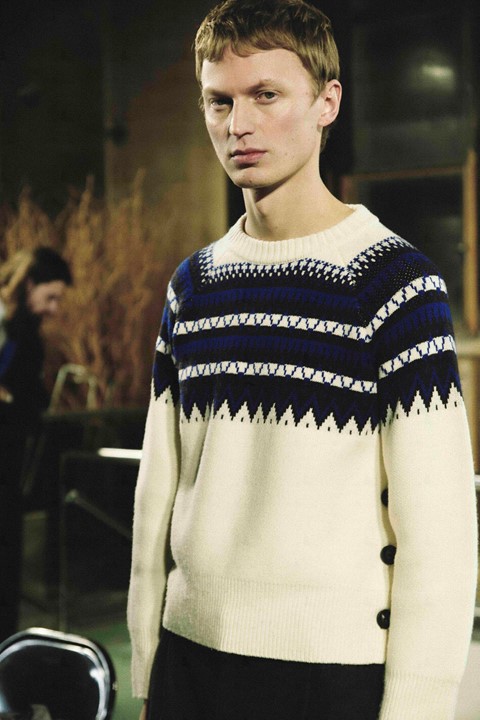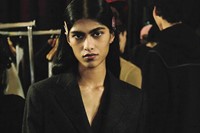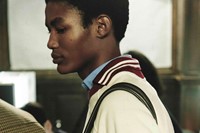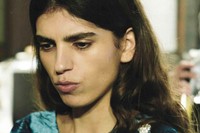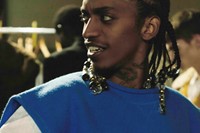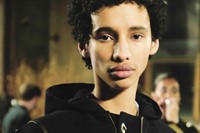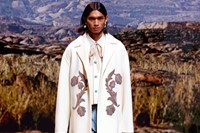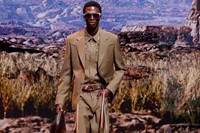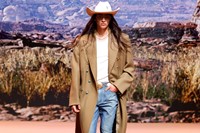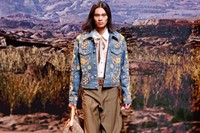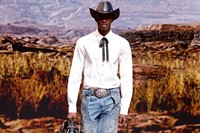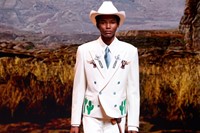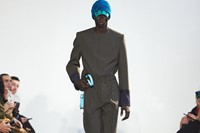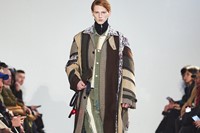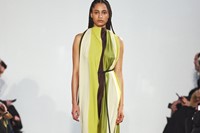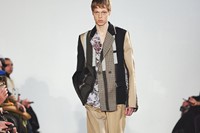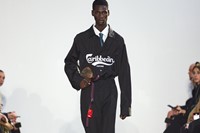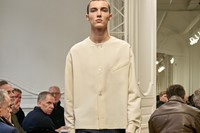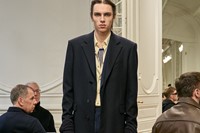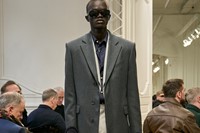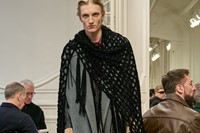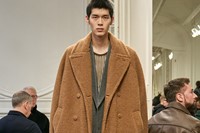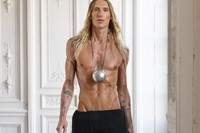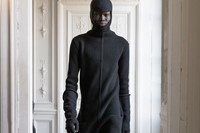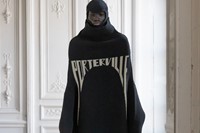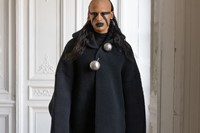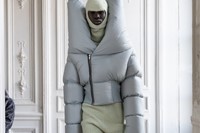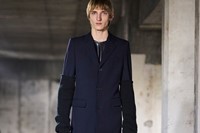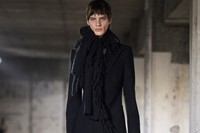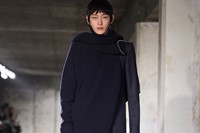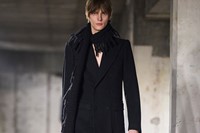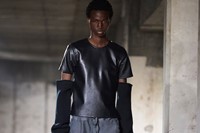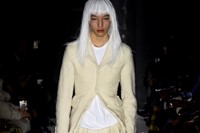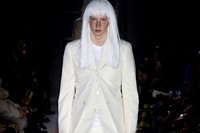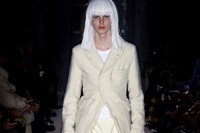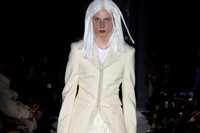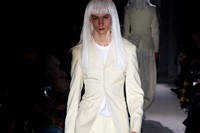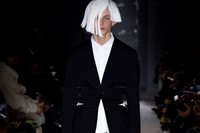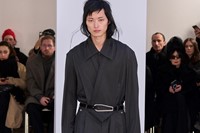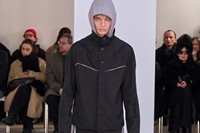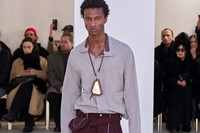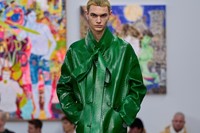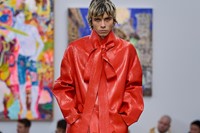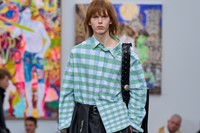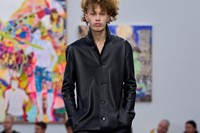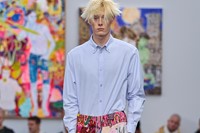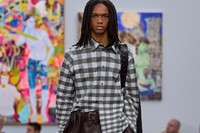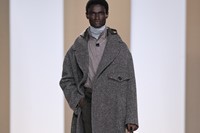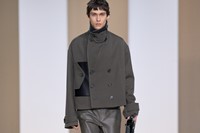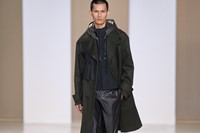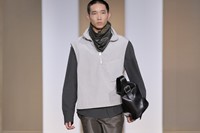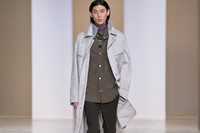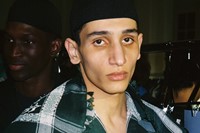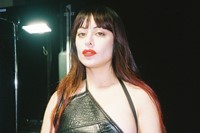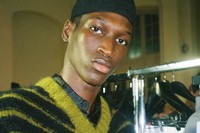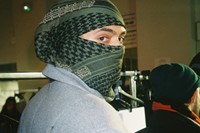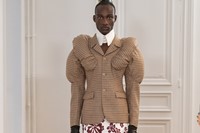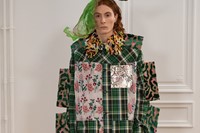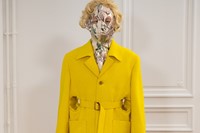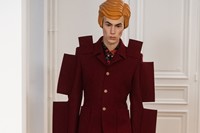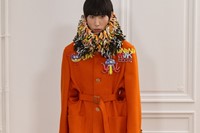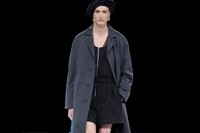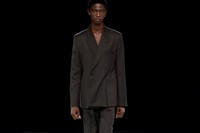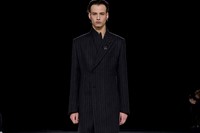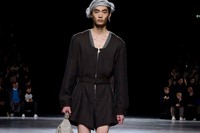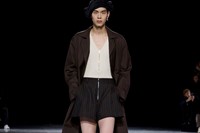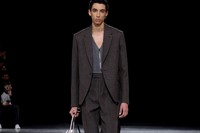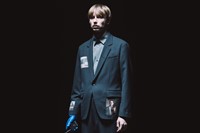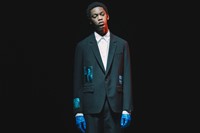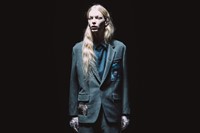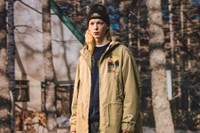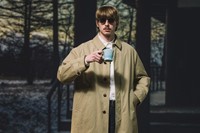From Jonathan Anderson’s hyperreal Loewe show to Wales Bonner’s study of academic wardrobes, here are the best menswear shows from Paris Fashion Week Autumn/Winter 2024
Wales Bonner
Continuing an academic journey that began with her curation of the Spirit Movers exhibition at The Met last year, Wales Bonner’s collection Dream Study was motivated by her time spent at Howard University’s Moorland-Springarn Research Center. Referencing the university’s yearbooks from the 1990s, the collection’s melange of tailoring and varsity wear was a “study of academic wardrobes” and “how people connected to hip-hop sounds and culture.” Minute detailing, like silver-edged tweed and studded boots, showcased her talent for studied, pragmatic – but certainly not simple – clothing.
Louis Vuitton
For his third show at Louis Vuitton, Pharrell Williams took to rewriting the white-washed narrative of the Wild, Wild West. If the show’s casting represented his retelling to importantly include Black and Native American cowboys, the Americana design references were heavy on sartorial stereotypes (albeit glitz and glammed in William’s star-studded way): cowboy hats, bolo ties, fringed chaps, turquoise hardware. Of note were accessories hand-painted and embroidered by artists from the Dakota and Lakota tribes – and, of course, the house’s gold riveted collaboration with Timberland, showcased in LV trunks carried by workwear-clad porters.
Botter
With their collection Dark Waters, Botter focused on wearability: an inside-out consideration of how it feels to wear the garments and a grounded, rationality of silhouettes as a reaction to the uncertain times we live in. The result was a confident and clever offering of their Caribbean couture: perfectly tailored jackets interweaved by needle-punched wool, draped dresses and trench coats constructed from trousers, and suiting paired with their now-iconic shoe developed in collaboration with Reebok.
Givenchy
While Givenchy waits to appoint a new creative director, the house presented a harmonious, streamlined studio collection. Set in the Givenchy headquarters, the show was an ode to the house’s founder – the opening look included an elegant interpretation of his iconic white-shirted work uniform. Between perfectly cut suiting and outerwear, the collection was perked up with references to some of Hubert de Givenchy’s more playful quirks: a feline print coat and top, as well as long-haired shaggy coats and bags, lovingly embracing his adoration for cats.
Rick Owens
Welcoming show guests into his home, Rick Owens declared with his collection Porterville that he wants “to be a haven. A force of anti-intolerance.” Named after the “bleak” Californian town where he grew up, the designer described “collection proportions” as “grotesque and inhuman in a howling reaction to some of the most disappointing human behaviour we will witness in our lifetime.” Extraordinary ballooned rubber boots, fur-balled body wrappings, and spiked shoulder pads provided protection from (and rejection of) the toxic sameness that Owens calls “airport beauty.”
Dries Van Noten
Following his exploration of the “unfamiliar in the familiar” in his S/S24 womenswear show, Dries Van Noten described his A/W24 collection as a study of “the elegance of the unexpected.” But it was less about clashing details, or finding perfection in imperfection, than it was about holding two opposing truths at one time: cargo pants were cut from elegant suiting material, shaggy scarves were furled over his showstopping coats, and sleek knitted arm warmers completed shortened or pushed up sleeves.
Comme des Garçons Homme Plus
For her collection entitled Spiritual World, Rei Kawakubo explained in her translated show notes that “white is the symbol of prayer”. And so, the show opened with entirely white looks, a surprise from a designer known for her love of black. While black did of course appear, it was always gentled by splices of silver sequins shining through deconstructed jackets and pearl button detailing. The soothing tactility of fuzzy textiles and the coddling, voluminous draping offered a respite, a reassurance, a comfort from the darkness of our times.
Kiko Kostadinov
As the brand prepares to open a new HQ in Paris and a standalone store in Tokyo, Kiko Kostadinov presented an “aggregate manifesto of gestures and forms” – a revisiting of old designs and ideas. Kostadinov explained that “this is [a move of] claiming territory. I don’t need to constantly look for new things,” and showgoers delighted at seeing favourite silhouettes once again take centre stage. There was, of course, innovation: the brand introduced its first foray into denim via a collaboration with Levi’s.
Loewe
“Collaged realness” was how the show notes described Jonathan Anderson’s collection for Loewe, a hyperreal enmeshment of fashion, art, masculinity, and subcultures that mirrored the everything-and-everywhereness of social media. If waistlines were sky-high last season, now they were slung low with undone belts and messily tucked-in shirt ends. The collection also included his signature leather coats and exquisite printed designs created in collaboration with artist Richard Hawkins. But the real showstoppers were the all-in-one pieces – shoes attached to socks attached to trousers – a comment on the inescapable, all-encompassing presence of social media. After all, “we are just the internet,” declared the designer post-show.
Hermès
Whereas fashion’s other headline acts played with volume this season, Hermès went against the grain: tapering in tailoring in favour of slim, streamlined suiting. Models with shaggy blue and blonde hair, the soft remixing of heritage classics in pops of violets and lime (amongst an otherwise greyish palette), and rubber detailing on jackets added an unusual yet welcomed slant of alt-indie to the house’s grounded classicism.
GmbH
If other designers have alluded to the nightmarish state of world affairs, GmbH used their show to place the conflict and destruction in Gaza centre stage. “We are interested in the political and formal possibilities of fashion as a medium of intercultural exchange,” affirmed Benjamin Alexander Huseby and Serhat Isik in a pre-show speech. But the collection was as technically strong as its messaging: the keffiyeh scarf was used in exquisitely tailored jackets, while T-shirts were emblazoned with the UN logo and watermelons – a symbol of solidarity.
Walter Van Beirendonck
Walter Van Beirendonck explained that, to create his latest collection, quizzically entitled Banana Wink Boom, he played “a Frankensteinian art game with my own mind.” Yet the surrealist characters he unleashed were far from scary; they were fantastic examples of his knack for melding exquisite tailoring with oddish detailing. Models wandered like (friendly) zombies about a pokey apartment – some guests were seated in what may as well have been a closet – whispering oddities like “I come from space” or drawing attention to pithy slogans emblazoned on jackets like ‘NO WAR.’
Dior Men’s
For his first venture into couture for Dior Men’s, Kim Jones used a series of photographs taken by his uncle, Colin Jones, of ballet dancer Rudolf Nureyev, and a gown worn by Margot Fonteyn as the starting points. Sturdy ballet-esque shoes were paired with lithe knee-high socks and the designer’s now signature single-buttoned coats, while milliner Stephen Jones fitted models with turbans inspired by Nureyev’s formidable array of headwear. But perhaps the most awe-inspiring were Jones’ couture creations: a uchikake, inspired by a gown owned by Nureyev, took a team of ten Japanese artisans three months to make.
Undercover
It comes as no surprise that Undercover’s Jun Takahashi is a fan of David Lynch’s series Twin Peaks. His latest collection, entitled Wonderful and Strange after an Agent Cooper quote, borrowed iconography and imagery from the series in both a homage to the Lynchian cult classic and a chilling analogy for the dystopian state of our world. Film stills were woven into fabric, jacquards were attached to 90s-era athletic wear and oversized suiting, while technical outwear seemed apt for the series’ frigid setting – and our eerie reality.
